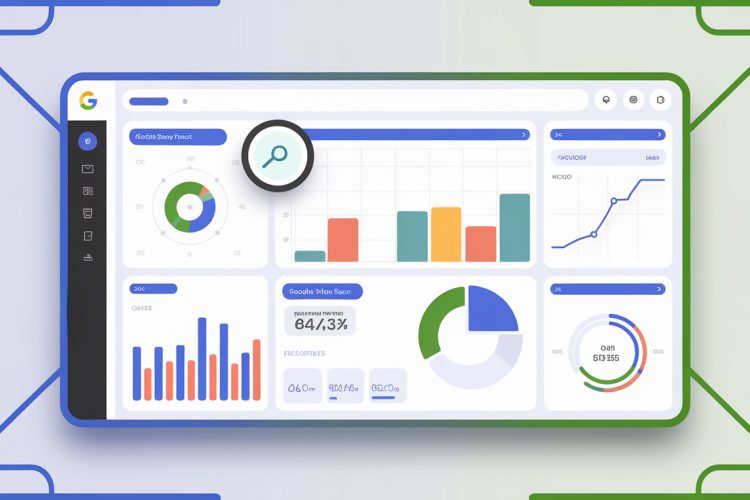
Formulating Your SEO Strategy
To really shine online, small business owners gotta nail down their SEO game. It’s about getting the basics and knowing what words will get your business seen.
Understanding the Basics
So, let’s chat about getting your SEO plan in gear. There are three main bits: on-page SEO, technical SEO, and off-page SEO.
- On-Page SEO: This is about sprucing up the pages on your site so they stand out on search engines. Think keywords, meta talk, and good-quality content.
- Technical SEO: This one’s about making sure your site ticks all the right technical boxes for modern search engines. Look at things like speed, mobile-friendliness, and making sure it’s secure with that HTTPS thing.
- Off-Page SEO: This happens off your site, but it still matters! It’s about getting other sites to link to you, using social media, and reaching out to people who can influence others.
When small business owners focus on these, it carves a path for getting a steady stream of site visitors.
Identifying Target Keywords
Picking the right words folks type in search bars is a biggie in SEO. Here’s a quick guide on how to suss out those golden keywords:
-
Brainstorm Seed Keywords: Jot down words and phrases your biz is all about. These are your main topics or “head terms”.
-
Use Keyword Research Tools: Tools like Semrush or Google’s Keyword Planner are like magic wands for keywords. They help refine and expand your list.
| Tool | Purpose |
|---|---|
| Semrush | All-round keyword hunting and peeping on competitors |
| Google Keyword Planner | Find new words and get some cost predictions |
| Ahrefs | Dive deep into backlinks and keyword deets |
-
Analyze Competitors’ Keywords: Check out what words your rivals are using and crushing it with. This is treasure hunting for keyword chances and market gaps.
-
Evaluate Search Intent: Peek into what people really want when they type those words. It helps you craft content that matches their vibes.
-
Check Monthly Search Volume (MSV): See how often people are searching for specific terms. This helps prioritize keywords that drive traffic.
-
Mix Head Terms and Long-Tail Keywords: Head terms are popular but crowded. Long-tail ones are like hidden gems — fewer searches but target better.
| Keyword Type | What They Are Like | Example |
|---|---|---|
| Head Terms | Popular, everyone wants them | “SEO tips” |
| Long-Tail Keywords | Specific, less crowded | “how to build an SEO strategy for small business” |
Stick to these steps, and you’ll be laying down a solid SEO framework for success. For more juicy details, peep our full guide on creating an SEO strategy.
To keep winning, always tweak and check how your keywords stack up in the mix of changing trends. Also, don’t miss our handy SEO strategy checklist to make sure you’ve got every angle covered.
Content Optimization Techniques
Juicing up your content is like skipping the line at a crowded concert; everybody wants in, especially the underdogs trying to rise to the top! Let’s chat about three biggies in the SEO game: getting buddy-buddy with entities, shaking up your content regularly, and jazzing up your pages with eye-catching visuals.
Entity-Based Optimization
When it comes to entity-based optimization, think of it as teaching search engines a new language—one where context and connections rule. Entities are what we call the VIPs of information—our celebrities, locations, and must-have gizmos. Nailing this means you’ll be hanging out on the ‘A’ list of search results!
Here’s the plan:
- Spot the VIPs: Pinpoint the hot topics tied to your main ideas.
- Nail the Jargon: Use schema to let search engines in on the who’s, what’s, and where’s.
- Squad Goals: Bundle your content into tight-knit groups for better relevance.
By roping in these entities, our content doesn’t just talk the talk, but walks the walk—easy-peasy for search engines to latch onto. Got the itch for more? Peek at our complete guide on building an SEO master plan.
Prioritizing Fresh Content
Imagine stale bread versus fresh-from-the-oven loaf—guess which one Google likes more? Keeping your stuff fresh is not just about feeding the search engine monster; it’s also about making your readers say, “Hey, these folks know what they’re talking about!”
Reel in fresh vibes:
- Spruce It Up: Keep those articles polished and shiny with the latest info.
- Hop on Trends: Zero in on what’s buzzing in your field right now.
- Stay on Schedule: Keep a content calendar so you’re always ahead of the game.
Throwing in regular updates makes your site the place to go, giving you that extra street cred. According to fellow SEO buffs over at Search Engine Journal, keeping things hopping with fresh bits and pieces keeps you on Google’s nice list.
Leveraging Visual Assets
Colors, snapshots, and videos—let’s talk visuals! It’s not just about making it look pretty; these elements are like having neon signs pointing everyone straight to your content. Plus, your stuff can start popping up everywhere, from image searches to those cool carousels you see on Google.
To make your site visually lit:
- Show Off Your Pics: Use crisp images that totally sync up with what you’re talking about.
- Snap Chat: Alt text and names for images are your new BFFs.
- Capture Action: Throw in videos to keep folks around longer.
- Visual Punchlines: Infographics to put your key points front and center in style.
Visual stuff doesn’t just brighten up the joint—they’re your golden ticket to grabbing eyeballs and boosting SEO magic. For a deeper dive into this visual party, scope out our article on SEO tricks of the trade.
| Asset Type | The Perks | How We Roll With It |
|---|---|---|
| Images | Keep eyes glued, rock the SERP scene | Tell a story in alt text, trim file sizes for speed |
| Videos | Boosts linger factor, ramps up interest | Include written words, use video hooks |
| Infographics | Makes sharing a breeze, condenses complicated stuff | Go social, label files smartly |
Nailing these content tricks can elevate your SEO sweet spot, give your online presence a boost, and open the floodgates for more visitors. Don’t stop here—check our stash of insights like ways to pump up your site’s SEO and master SEO strategies for the lil’ guys, so you can really strut your stuff online.
The Power of Backlinks
E-A-T Signals: Making Your Mark
When it comes to boosting search engine fame for a small biz, nailing those E-A-T vibes—Experience, Expertise, Authoritativeness, Trustworthiness—is a big deal. Google’s out here judging these traits, especially when it comes to topics that hit close to home like health, finance, and safety. They’re all about making sure the stuff at the top is rock-solid and reliable (Search Engine Journal).
The secret sauce? Backlinks from those websites everyone knows and trusts. They’re like high-fives from the internet world saying, “Hey, listen to these guys; they know what they’re talkin’ about.” The right links can shout out your street cred, telling everyone and their cousin that your content’s the real deal (Search Engine Journal).
Link Building Tips & Tricks
Getting those links is like playing matchmaker for websites—totally worth it. Boosting your spot in search results comes down to snagging quality backlinks. Check out these tried-and-true methods to step up your link game:
- Content That Clicks
- Cook up some killer content everyone wants a piece of. Stuff like ultimate guides or step-by-step how-tos usually gets the nod from other sites.
- Tools That Rule
- Whip up something handy, like a tool or widget, that makes life easier for people. Others might want to share it with their own followers, bringing those sweet, sweet links back to you.
- Email Hustle
- Slide into the inboxes of big names, bloggers, and webmasters, letting them know about your awesome stuff. A good email can lead to good vibes and good links.
- Fix Broken Links
- Spot those sad broken links on websites in your circle and offer your content as the hero fix. Websites are happy, and you snag a prime backlink. Win-win!
- PR Push
- Roll out the red carpet with PR moves to chat up your business. Press releases, news shoutouts, and getting noticed by the big publications can land you some primo, authoritative links.
Here’s a quick look at how these link-building tactics stack up, according to industry buzz:
| Link Building Trick | How Awesome Is It? (1-10) |
|---|---|
| Content That Clicks | 9 |
| Tools That Rule | 8 |
| Email Hustle | 7 |
| Fix Broken Links | 8 |
| PR Push | 7 |
Source: Backlinko
If running a small biz, these hacks can make or break your search ranking game. Dive deeper into our breakdown on link building in SEO plans.
Never forget—it’s not about how many links you get, but how good they are. Solid backlinks tell the search bots you’re the real deal, which can skyrocket your search spot. Curious about link building’s bigger picture? Check our SEO strategy examples.
By nailing these tactics, we’re setting the stage for our small businesses to shine in search results and catch that online wave.
Enhancing Site Structure
Tweaking your site structure is a big win for our SEO game. So, let’s get into what makes mobile optimization a must and how you can nail internal linking like a pro.
Mobile Optimization Importance
Why bother with mobile optimization, you ask? Because Google is all about mobile-first indexing these days. Basically, they’re looking at the mobile version of your site before anything else when deciding if you deserve that top spot in search results. With over half of us doing our googling on our phones, making sure your site is easy to use on a small screen is no longer a “nice-to-have” (HubSpot).
Key Aspects of Mobile Optimization:
- Responsive Design: This just means your site needs to look good, whether it’s on a computer, tablet, or a phone.
- Loading Speed: Nobody’s sticking around if your site takes forever to load. Cut down those image sizes and ditch any unnecessary scripts.
- User Experience: Make sure it’s easy for people to navigate your site. Buttons should be big enough to tap, and get rid of those annoying pop-ups.
We’ve got a full-blown guide on making your site mobile-friendly for those looking to dig deeper.
| Mobile Optimization Aspect | Importance Level |
|---|---|
| Responsive Design | High |
| Loading Speed | High |
| User Experience | High |
Internal Linking Best Practices
Let’s chat about internal linking. It’s like the unsung hero of SEO strategy. It helps both search engines and visitors make sense of your site (HubSpot). Here’s how you can get it right.
1. Use Descriptive Anchor Texts
- Your anchor text should make it clear what the linked page is about.
- Skip the boring “click here.” Instead, go for something that actually portrays the content, like SEO strategy for small businesses.
2. Link Deeply
- Don’t just link to your homepage. Dive into that rich, juicy content within your site.
- This way, you spread those good vibes—or page authority—around.
3. Maintain a Logical Structure
- Your internal links should make sense in a hierarchy.
- Categories and subcategories should connect in a sensible way.
4. Balance Link Quantity
- Don’t go overboard with links on a single page.
- Too many links can be overwhelming, so keep it tidy.
Need more insights on this? Check our advice on beefing up your site’s framework with internal linkage.
Internal Linking Checklist:
- [ ] Use descriptive anchor texts
- [ ] Link to deep content
- [ ] Keep a smart hierarchy
- [ ] Don’t overload on links
If we focus on getting mobile optimization and internal linking right, we’ll spice up our site structure, making it a hit with users and search engines alike. Want more pointers on beefing up your SEO strategy? Swing by our SEO planning guide and other nifty resources we’ve put together.
Also, for cooking up an A+ SEO strategy, keep an eye out for our updates on SEO wizardry.
Insights from Keyword Research
Getting a handle on keyword research is key to cooking up an SEO strategy that’ll make your site shine online. It ropes in more visitors without emptying your pockets on ads. Two big hitters in this game are sizing up where your competition beats you and weaving in related keywords.
Keyword Gap Analysis
Ever wondered why competitors seem to be a step ahead with certain search terms? A good keyword gap analysis shows you where they’re shining and you’re not. That’s free loot right there. Gear up with tools like Semrush’s Keyword Gap widget to snap up keywords you’re missing (Semrush).
Here’s how understanding keyword gaps can level up your small biz:
- Spot hot candidates: Pinpoint where your rivals steal the spotlight.
- Plan smarter: Target your writing and get eyes on high-value keywords.
- Stay in the game: Close the leaderboard gap with those ahead.
Peep this sample table to see a keyword gap analysis in action:
| Competitor Keyword | Competitor Rank | Your Rank | Suggested Move |
|---|---|---|---|
| small business seo tips | 3 | Not on the map | Whip up optimized content |
| local seo strategy | 5 | MIA | Present a local SEO guide |
| seo for e-commerce | 8 | Nada | Launch and tweak an SEO plan for online shops |
Incorporating Semantic Keywords
Sprinkling semantic keywords into your copy isn’t just for show—these are the helpers that beef up your pages’ relevance and tell search engines what you’re about. With tools like Semrush’s SEO Content Template, getting these keywords nailed down is a cinch (Semrush).
Check out why semantic keywords are a win:
- Boost credibility: Enrich your story with terms users actually search for.
- Grow your reach: Cast a wider net over different search leads.
- Hello, reader engagement: Create thorough and tasty content for visitors.
Say your keyword’s “best straighteners for curly hair.” You might throw in “ceramic straighteners,” “tourmaline options,” or “hair-straightening techniques.” These extras make your write-up pop and get you better eyeball time.
If you’re itching for real-world tips on working these strategies, hit up our seo strategy examples to see it in action.
By plugging in keyword gap analysis and using semantic keywords, you’re stacking your SEO efforts high. You’ll not only keep pace with the competition but also up your content game and grab those search results. Wanna dig deeper for a killer strategy? Explore our seo planning guide and other seo tips for small businesses.
Monitoring SEO Performance
When it comes to understanding how to build an SEO strategy, it’s like cooking up the perfect recipe; regular taste tests are required. Monitoring is our taste test, ensuring we’re hitting the mark and spotting any areas that could use a little more seasoning.
Tracking Keyword Rankings
Keeping tabs on keyword rankings is as crucial as knowing which ingredients make your dish shine. Our aim is simple—see how our chosen flavors (keywords) are mixing it up on the search engine dance floor. Tools like Semrush are like our secret spice rack, helping us sprinkle our SEO magic in just the right doses.
Check out how we track these keywords with a handy dandy table:
| Keyword | Current Rank | Previous Rank | Change in Ranking |
|---|---|---|---|
| Best Coffee Beans | 5 | 7 | +2 |
| Organic Skincare | 12 | 10 | -2 |
| Vegan Recipes | 7 | 6 | -1 |
Peeping at such tables over time helps us spot who’s being the belle of the SEO ball and who’s lagging behind. When we see a trend, it’s our signal to tweak our recipe, maybe to revisit some old favorites or try some new flavoring for visibility.
Analyzing Competitors’ Keywords
Swapping notes with the other chefs, aka our competitors, gives us a peek into the latest culinary trends in keywords. Knowing what keywords competitors are cooking with helps us place our own bets better. It’s like peeking into their kitchen to understand what’s getting a thumbs-up and what’s not.
Here’s our cheat sheet for whipping up a competitor keyword analysis:
- Identify Top Competitors: Ahrefs or Moz work wonders to figure out who’s stealing our spotlight.
- Extract Competitor Keywords: Armed with Semrush or Ahrefs, we dip into the list of keywords that our worthy opponents are using.
- Analyze Keyword Performance: We try to gauge the search volume and ranking difficulty like a seasoned chef would sniff the air to sense if a dish’s about to be ready.
- Prioritize High-Value Keywords: The name of the game is to find those keywords that make the cash register ring but aren’t overcrowded like a Saturday night diner.
| Competitor | Keyword | Search Volume | Keyword Difficulty | Current Ranking |
|---|---|---|---|---|
| Competitor A | Organic Skincare | 20,000 | Medium | 3 |
| Competitor B | Vegan Recipes | 15,000 | High | 5 |
| Competitor C | Coffee Beans | 25,000 | Low | 2 |
Keeping track of this info helps us tweak our strategy, like deciding whether to slow-cook a stew or toss it into a pressure cooker to beat the competition.
If you’re curious for more, why not have a look at our guide on how to measure and polish up your strategy? Monitoring these keyword ticks-and-tocks makes sure we’re ever ready for the next big move in the SEO arena.
Dig deeper and sharpen your SEO know-how with these resources:
- seo strategy checklist
- how to improve website seo
- building a long-term seo plan
- seo tips for small businesses
SEO Analytics Essentials
You want your small biz to stand out in the crowded online space, right? Well, a solid SEO strategy needs some ace analytics to show you what works and what’s a bust. Knowing how to dig into this data can give your online presence a good ol’ boost.
Using Data to Get Ahead
Having a gander at your site’s numbers tells the story of what’s clicking and what’s clunky. It’s like having a treasure map for your website. You can dive into keyword rankings, sniff around your site traffic, and see what keeps or loses each visitor. The goal? Make decisions that’re backed by facts you’ll find on sites like AIContentfy.
Things to Keep an Eye On:
- Where’s the Traffic From: Find out what keywords are bringing folks to your site and spruce up your content based on those.
- Tech Gremlins: Weed out small tech glitches that might be dragging your rankings down.
- User Patterns: Check out stats such as bounce rate and how long a visitor hangs around your pages to figure out site interaction.
| Metric | What’s it For |
|---|---|
| Organic Traffic | See who’s visiting from engines like Google |
| Bounce Rate | Measures if your content is holding interest |
| Conversion Magic | Counts those who take the action you want them to |
| Keyword Success | Tracks how your target words are doing |
| Speed Check | Faster pages mean happy users and better rankings |
Pumping Up Your Content Strategy
If you think high-quality content is simply nice to have, think again. SEO analytics dish out juicy details about what content your crowd digs. It helps tighten up your content strategy, ensuring you’re pulling them in and not putting them off (AIContentfy).
Juicy Tips to Jazz Up Your Content:
- Sprinkle Keywords: Let analytics spotlight goldmine keywords and weave them seamlessly into your content. Check out our seo keyword strategy to dive into the details.
- Stay Fresh: Keep your content up to date. Old, dusty content can hurt your ranking, so give it a good polish now and then.
- Patch Those Gaps: Spot which crucial topics you’re skimping on and cover them to meet reader needs.
- Use Eye Candy: Add images, videos, and cool infographics to keep folks engaged. For tips on using visuals, head to our leveraging visual assets.
| Action | What You Get Out of It |
|---|---|
| Refreshing Content | Stays on trend and keeps readers hooked |
| Visual Add-ons | Boosts interaction and improves your standing with Google |
| Close Content Voids | Ensures you’re guiding the user thorough their journey |
By tossing these SEO insights into the mix, we can tweak our content strategy for SEO and make our site shout louder on the web. For more tricks, swing by our advanced seo strategies.
Fundamental Pillars of SEO
Grasping the essential bits of SEO is the baseline for crafting a solid plan for those small business folks aiming to pop up on digital radars. Here, we chat about the basics of technical SEO and getting your site into shape.
Technical SEO Basics
Getting geeky with your SEO is a must to make sure search engines can read your stuff and take a good stroll around your website. It covers areas like crawlability, indexabilty, how well your site greets mobile users, how fast it loads, fancy structured data, and security (check Search Engine Land for more).
| Technical SEO Bit | What It Does |
|---|---|
| Crawlability | Lets search engines roam around your site. |
| Indexability | Makes sure engines can list and rank your pages. |
| Mobile-Friendliness | Makes your site friendly to mobile users. |
| Site Speed | Makes pages load fast for better user vibes and ratings. |
| Structured Data | Gives engines extra info using schema markup. |
| Security | Uses HTTPS to keep user info safe and build trust. |
Nailing the technical stuff sets up a neat base for all your SEO planning. Wanna go deeper? Check our seo planning guide.
Why On-Site Optimization Matters
Tweaking your site so engines know what’s what is key. We’re talking keywords, meta tags, juicy content, links inside your site, and making sure visitors have a sweet time (Search Engine Land). Here’s what to focus on:
| On-Site SEO Bit | Why It Matters |
|---|---|
| Keyword Optimization | Targets terms that matter to up your visibility. |
| Meta Tags | Uses titles and descriptions for searchable info. |
| Content Quality | Delivers top-notch content that pulls folks in. |
| Internal Linking | Boosts site navigation and spreads link juice. |
| User Experience | Keeps visitors happy and engaged. |
Getting your on-site SEO right tells engines what your site’s worth and helps visitors find value. Find more tips in our seo tips for small businesses.
Mingling technical SEO with on-site tuning gives you a thick-skinned SEO game plan. Knowing these must-know bits is crucial for small businesses wanting to pump up their digital presence and draw in organic traffic without a sweat. For the whole shebang, see our part on creating a content strategy for seo.




